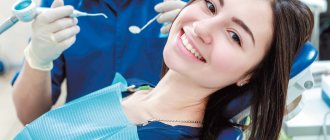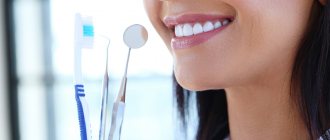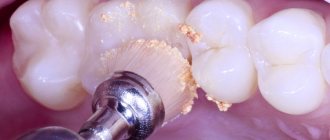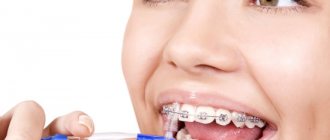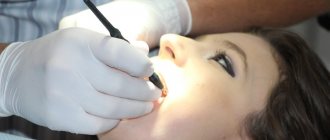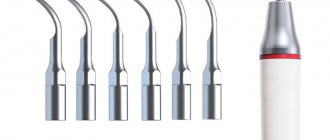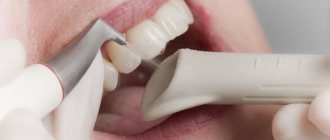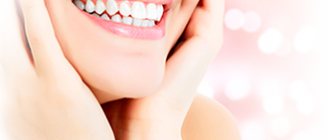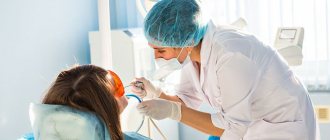What to expect during a hygiene visit?
During your initial examination and dental cleaning, our hygienist will review and evaluate your medical history to determine if there are any medical conditions that may affect your treatment.
At each subsequent visit, the Doctor will evaluate your oral health and note any changes. Each new patient visit begins with our specialists performing x-rays. If you are pregnant or have a medical condition that prevents you from having an x-ray, please note this in your medical record. If you have had an x-ray within the last 12 months, please send it to our dental clinic by email
or bring the study disc with you. Our goal is not to take an x-ray, but to have diagnostic material so that we can provide you, our patients, with a comprehensive dental examination and draw up a comprehensive treatment plan. The doctor will screen for oral cancer and oral lesions, and also test for oral symptoms of other serious diseases, including heart disease, cancer and diabetes. One of our dentists will conduct an examination of your dentition (dental examination) to look for possible new and recurring cavities. If one is found, conditions and treatment options will be explained to you. During a periodontal examination, your gums will be assessed for signs of gum disease by measuring the periodontal pockets with a probe. Our hygienists are trained and certified to administer local anesthesia to relieve discomfort during treatment, although this is rarely required as they have a very light hand and therefore a very gentle touch. As a rule, the simple use of desensitizers provides comfortable tooth brushing. At the end of your visit, the dental hygienist will teach, review, and reinforce proper oral hygiene techniques, including effective brushing and flossing. Our patients prefer to be treated by the same dentist. Regarding hygiene appointments, we support the same. Having the same professionals working with you regularly develops mutual understanding and continuity of dental care and knowledge of the individual needs of each patient.
What does regular teeth cleaning include in our dentistry?
The teeth cleaning procedure consists of several stages:
First, the dental hygienist will identify areas of tartar and plaque. Plaque
is a soft film covering your teeth that can be removed by proper brushing, tartar or hardened plaque that can only be removed with dental instruments. The hygienist will then remove the visible deposits on the stone using our ultrasonic machine, an ultrasonic scaler that sprays water. The next part of teeth cleaning is done using hand tools called scalers. The hygienist will clean all surfaces of your teeth—even the tiny spaces between teeth and along the gum line, where plaque, tartar, and bacteria that cause gum disease collect. The last part of teeth cleaning is done using a prophylactic toothpaste. The prophylactic paste is of better quality which dissolves into a finer texture as it removes the remaining plaque from your teeth. This is the part that patients like the most because this is where the teeth become bright, shiny and smooth. While brushing your teeth, the hygienist also pays attention to areas where plaque and tartar have accumulated. These areas indicate that you need to use the best brushing and flossing techniques to maintain healthy teeth and gums between dental visits. Once your dental cleaning is complete, your hygienist will review these areas with you and provide recommendations to help you correct your brushing technique so you can maintain good oral hygiene.
Types of professional oral hygiene
Professional cleaning can take place in different ways depending on the condition of the oral cavity and teeth of a particular person. Often, several techniques are used, either separately or in combination.
Mechanical removal of deposits
This method is also often called manual cleaning. Today it is used quite rarely and only if the patient has severe tartar and there are contraindications to other types of professional cleaning. Mechanical removal can also be used for wisdom teeth in which tartar is located in very hard-to-reach places.
The procedure involves removing deposits manually using a special curette with sharp edges. In this case, there is a risk of injury to soft tissues, which in turn can provoke inflammation and pain. Also, manual brushing can damage tooth enamel. That is why this technique is not popular in the modern world. In addition, it is being successfully replaced by other technologies, for example, the use of ultrasound.
Ultrasonic teeth cleaning
This technology is used very actively today, since it can cope with even the largest deposits of tartar. That is why ultrasonic cleaning at one time became a safer and more gentle alternative to mechanical removal of deposits.
Ultrasonic cleaning uses a special device known as a scaler. It has a special tip with a nozzle through which it produces ultrasonic waves. Getting on the tartar, they gradually destroy it and thereby contribute to its removal. In addition to the nozzle, water or an antiseptic solution is also supplied through the scaler, which ensures easier and faster operation.
The use of ultrasound during professional cleaning is indicated if the patient has severe tartar. It is a plaque that has become dense, hard and persistent over time. Tartar can be supragingival or subgingival. The second type is particularly dangerous, since it is it that leads to inflammatory processes in the gum tissue, which as a result can cause the development of periodontitis or periodontal disease.
Professional teeth cleaning Air Flow
This technique is the most modern and safe for teeth. As with ultrasound, it is performed using special equipment. In this situation we are talking about a sandblasting machine. Through a special nozzle, it delivers under pressure a mixture consisting of air, water and abrasive powder with very small particles. The combination of these substances destroys deposits and promotes their rapid removal from the oral cavity. Moreover, it is very important that Air Flow affects both deposits with a loose structure and pigmented deposits, which are often found among smokers and coffee drinkers.
Air Flow has many benefits, which is why this cleaning option is so popular. It is safe, effective, and thanks to the use of a special liquid, it refreshes the oral cavity and neutralizes pathogenic bacteria. An important point is also that the doctor can independently regulate the power of the jet that is supplied during the procedure. This feature makes it possible to select one or another mode, focusing on the condition of the patient’s teeth and their characteristics. This is especially true if the teeth have increased sensitivity or there are certain problems with the enamel.
The cleaning options listed are usually combined because they complement each other and allow you to get the maximum benefit. But sometimes these methods can be used in isolation. This is often practiced if a person has contraindications to a particular technique. For example, Air Flow is not performed on people with respiratory failure, and ultrasonic cleaning is prohibited if a person has a pacemaker.
What is the cost of teeth cleaning?
We offer a package fee for examination, consultation and professional teeth cleaning in the amount of 15,000 rubles per year. If you are a healthy patient who does not require frequent dental examinations and treatment, you can pay and schedule a routine dental examination and cleaning once every six months. the cost of teeth cleaning, in the second case, will be 11,000 rubles for 2 scheduled visits. To ensure proper dental care for our patients, the first visit includes a digital oral x-ray (with panoramic x-ray), a comprehensive dental exam, nutritional counseling, oral hygiene instructions, and a dental cleaning.
Indications for the procedure
It is recommended to have professional teeth cleaning for preventive purposes, even if nothing bothers you and your teeth visually look healthy. Typically, this procedure is performed during an annual visit to the dental clinic. It is also indicated if you are undergoing dental treatment. We are talking not only about installing fillings, but also about dental prosthetics or orthodontic treatment.
As for the frequency of visiting the dentist for professional cleaning, everything is individual. For most people, it will be enough to do this procedure 1-2 times a year. But sometimes there is an increased accumulation of plaque and, as a result, rapid formation of tartar. In this case, it is recommended to carry out cleaning every 3-4 months. This is especially important if you have gum problems. Also, more frequent cleaning is necessary for people who smoke, because cigarette smoke not only turns teeth yellow, but also contributes to the appearance of plaque on them. This rule also applies to patients who abuse wine, coffee and other products containing a high concentration of pigments that stain the enamel.
Why are there different types of teeth cleaning?
There is only one dental procedure, which is teeth cleaning, prophylaxis or otherwise - professional oral hygiene. All other procedures, although may be referred to as cleanings, are periodontal treatments. The reason they are called “cleanings” is because the treatment process is similar to the regular teeth brushing that we are familiar with. Please read on to find out what these procedures entail.
- preventive teeth cleaning
- COMPLETE, ULTRASONIC, CALCULUS REMOVAL
- CLOSED OR OPEN CURETAGE
- CLEANING + PREVENTION OF GUM DISEASES
- This is a routine teeth cleaning performed every 6 months by a hygienist or dentist. This type of dental cleaning is provided to healthy patients to remove plaque and tartar that has accumulated above the gum line.
- This is a “pre-cleaning” procedure. It is carried out ONLY in patients with very serious stone formation, almost overgrown with teeth and gums. This procedure is performed prior to the examination and may require additional teeth cleaning and/or periodontal treatment.
is a medical procedure to cleanse the space between the tooth and gum. It is prescribed to treat early stages of gum disease or as a pretreatment before surgery for patients with more severe gum disease. The procedure will be carried out by our dental hygienist or our periodontist. The goal is to reach below the gum line and remove tartar and bacteria that accumulate on or near the roots. You may also need antibiotics to kill hard-to-reach bacteria. To learn more about periodontal disease and its treatment, visit Periodontics.
is a periodontal cleaning that can be performed by a dental hygienist or periodontist. Periodontal maintenance is prescribed in lieu of preventative dental cleanings for patients with a history of any type of gum disease. Unlike regular tooth brushing, the frequency of periodic maintenance varies. Depending on the severity of the gum disease, the doctor will decide whether the patient should undergo treatment every 3 or 4 months.
Contraindications
Professional teeth cleaning is a safe procedure. However, it also has its contraindications. First of all, they concern the health of teeth and oral cavity. Thus, cleaning is not recommended if the patient is diagnosed with erosion of tooth enamel or has very high tooth sensitivity. The procedure is also contraindicated in cases where there are inflammatory diseases of the gums or other tissues of the oral cavity in the acute phase. However, it can be done immediately after the pathological process has been eliminated.
It is not recommended to perform professional hygiene if a person has an infectious disease or any other pathology in the acute stage. In this case, you first need to undergo treatment, and only then seek help from a dentist.
Why do I need to have an examination and x-ray at my first visit?
Being one of the best dentistry in Krasnodar with more than 14 years of experience, Smile Clinic has developed its own principles to provide the best dental care to our patients. From the moment you enter our dental office, we take responsibility for your well-being. However, without x-ray vision, neither our hygienists nor our doctors can guarantee the health of your teeth. An old filling that appears healthy may have internal decay that cannot always be detected just by looking at the tooth. Periapical pathology that forms at the tip of a tooth root that may have been injured during a catch (or other contact game) cannot be diagnosed and will not be discovered until the nerve is dead, in which case you may end up root canal treatment or, even worse, removal of such a tooth.
How to prevent tooth decay?
Caring for your teeth and mouth after professional cleaning
After cleaning at the dentist, your teeth look perfectly clean and white. You want to keep this feeling of freshness longer, so experts recommend adhering to the following rules.
- If you have had your teeth treated with ultrasound or fluoridated, do not eat food for 2 hours after the procedure. Also, if fluoridation was done, you should not brush your teeth on the same day.
- The first days after professional cleaning, it is recommended to brush your teeth not only in the morning and evening, but also after each meal. If this is not possible, then you should at least rinse your mouth with mouthwash.
- Professional cleaning can increase tooth sensitivity, so after the procedure you should avoid very cold or very hot foods. Sweet and sour foods are also prohibited.
- If possible, stop smoking for a few days after cleansing. Or at least minimize the number of cigarettes you smoke. This will help keep your teeth white.
- Choose the right toothpaste and brush for you. In this matter, it is better to consult your dentist.
Professional teeth cleaning is the key to their health and well-groomed appearance. Therefore, be sure to contact your dentist to undergo this procedure. In Sochi, you can do this at Author’s Dentistry “Skakovsky”. Our clinic has modern equipment, and our specialists practice only the most advanced cleaning techniques. If you would like an examination, a cleaning, or need dental treatment, contact us and you will receive all the care you need at the right price.
come back
Teeth cleaning in Krasnodar
Brushing with a toothbrush
Use a soft-bristled toothbrush to avoid scratching your teeth.
Use a small brush head. This will give you better access even to your back teeth. Once the bristles wear out, replace the toothbrush with a new one. Use a small amount of toothpaste, that's all you need. Having more toothpaste does not mean you will brush your teeth better, but a good toothbrush will. When brushing your teeth, hold the toothbrush at a 45-degree angle and move it in a progressive motion from gum to tooth, taking your time, covering all the areas between the teeth and the surface of each tooth. A good brush lasts two minutes. Also brush the inside and chewing surfaces of all your front and back teeth. Clean your tongue and the top of your mouth before gargling. Don't swallow toothpaste. Rinse your mouth thoroughly with water after brushing. For optimal oral hygiene, it is important to floss your teeth thoroughly and daily. Due to limited space or crowding, a toothbrush may not be able to clean all the food particles stuck between the teeth. Therefore, flossing is an important step in home care. Dental floss is used to reach below the gum line and clean between the teeth. It is very important! Remove a small amount of dental floss from the dispenser. Wrap the ends of the thread tightly around your second fingers (index fingers). Guide the floss between each tooth from the top to the gum line, pulling out any food or plaque trapped between the teeth. If you have dental restorations such as crowns, veneers or bridges, pull the floss upward while moving the floss away and towards you. Remember this: we brush our teeth in the morning for others, and before bed for ourselves!
Have it professionally cleaned
Ultrasonic cleaning is not recommended if braces are installed - ultrasound can weaken the adhesive bond between the braces and the teeth. But Air Flow for fixed systems is completely safe. Such cleaning once every 4-5 months will help the entire treatment period pass without plaque, which provokes caries. Those who wear aligners can have both Air Flow and ultrasonic cleaning.
Plaque appears in all people, even in those who brush their teeth very carefully. Therefore, such cleaning is recommended to everyone approximately once every 6 months, and if indicated, a little more often.
When wearing braces and aligners, you should periodically undergo professional cleaning at the clinic.
